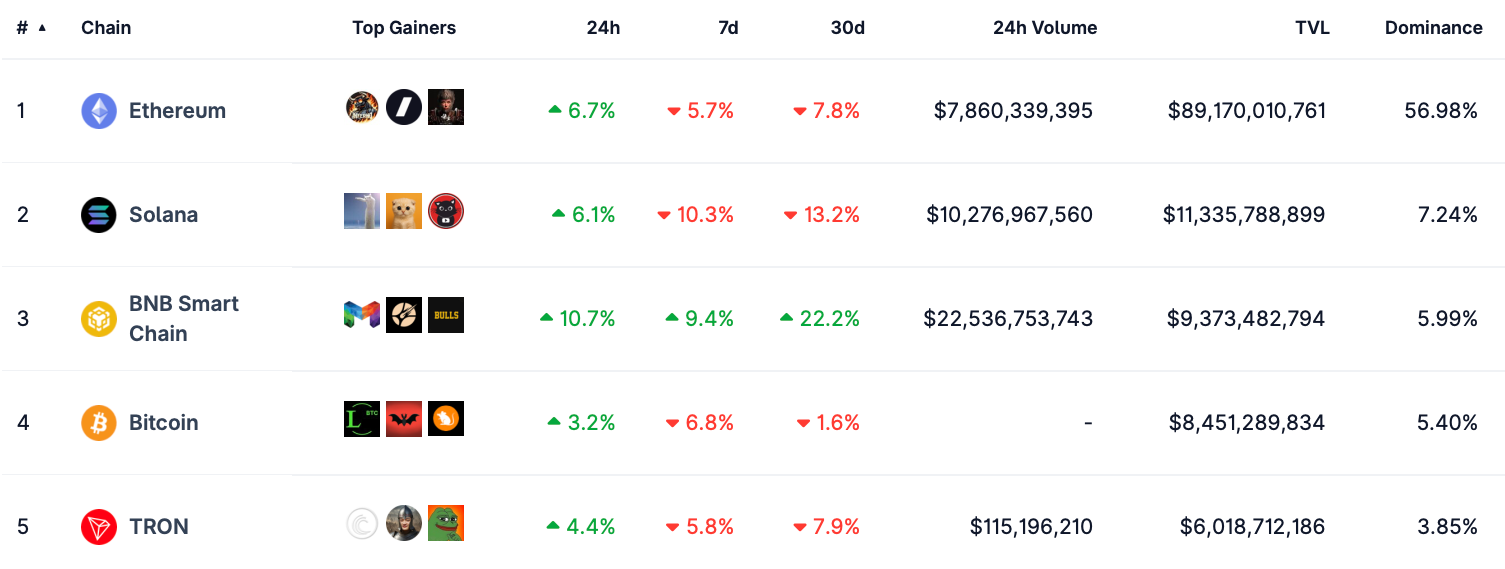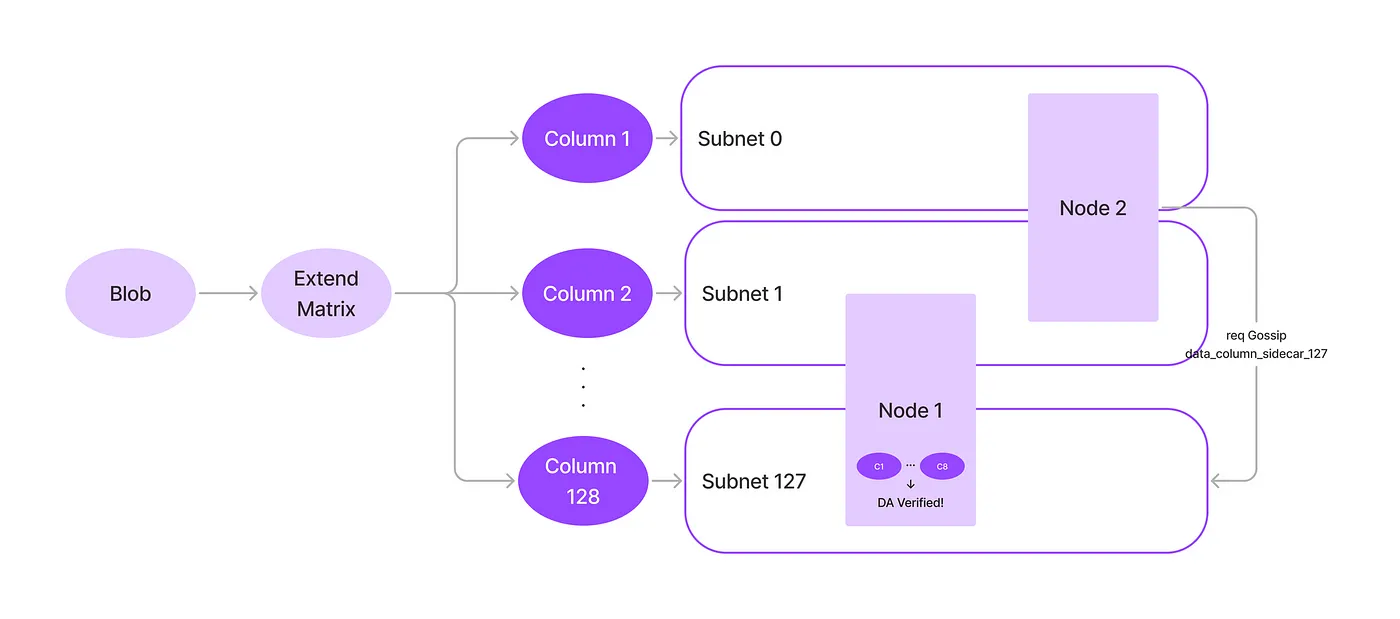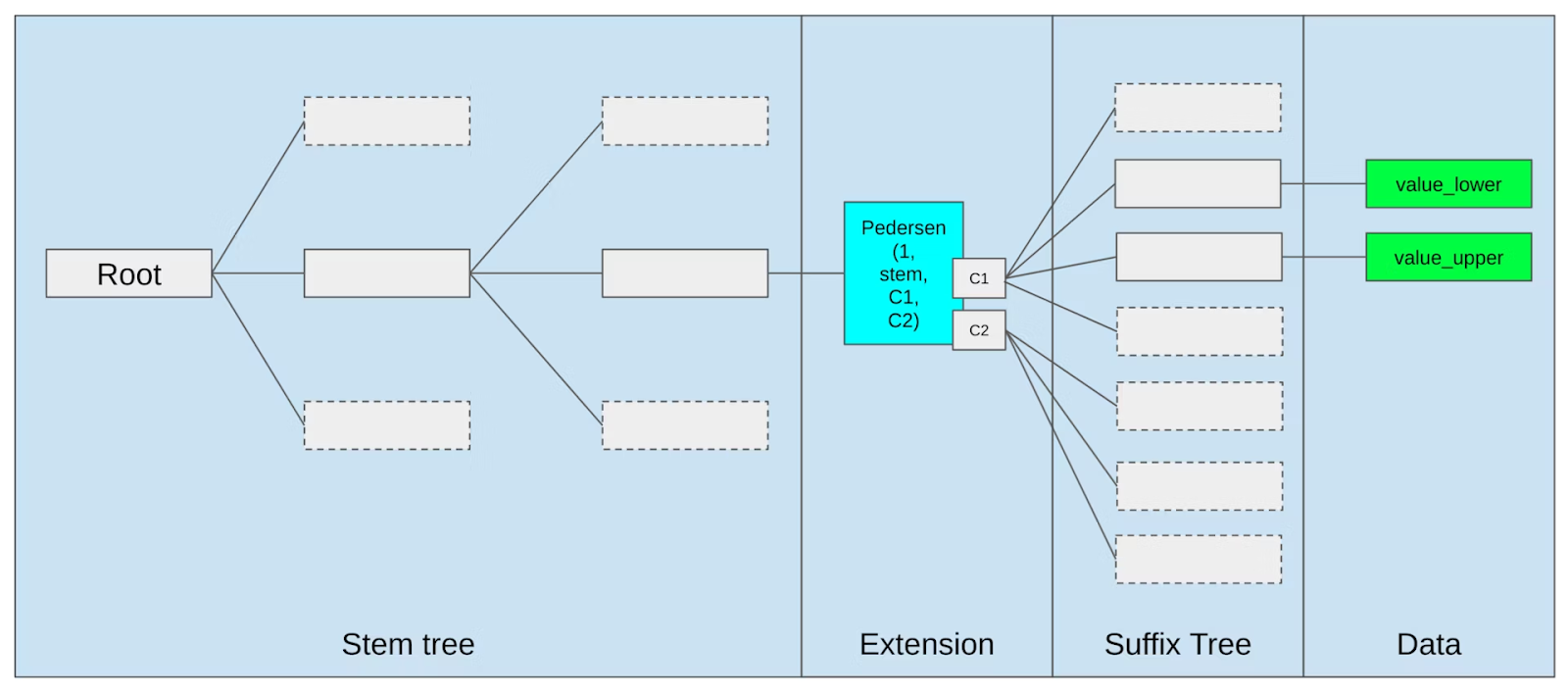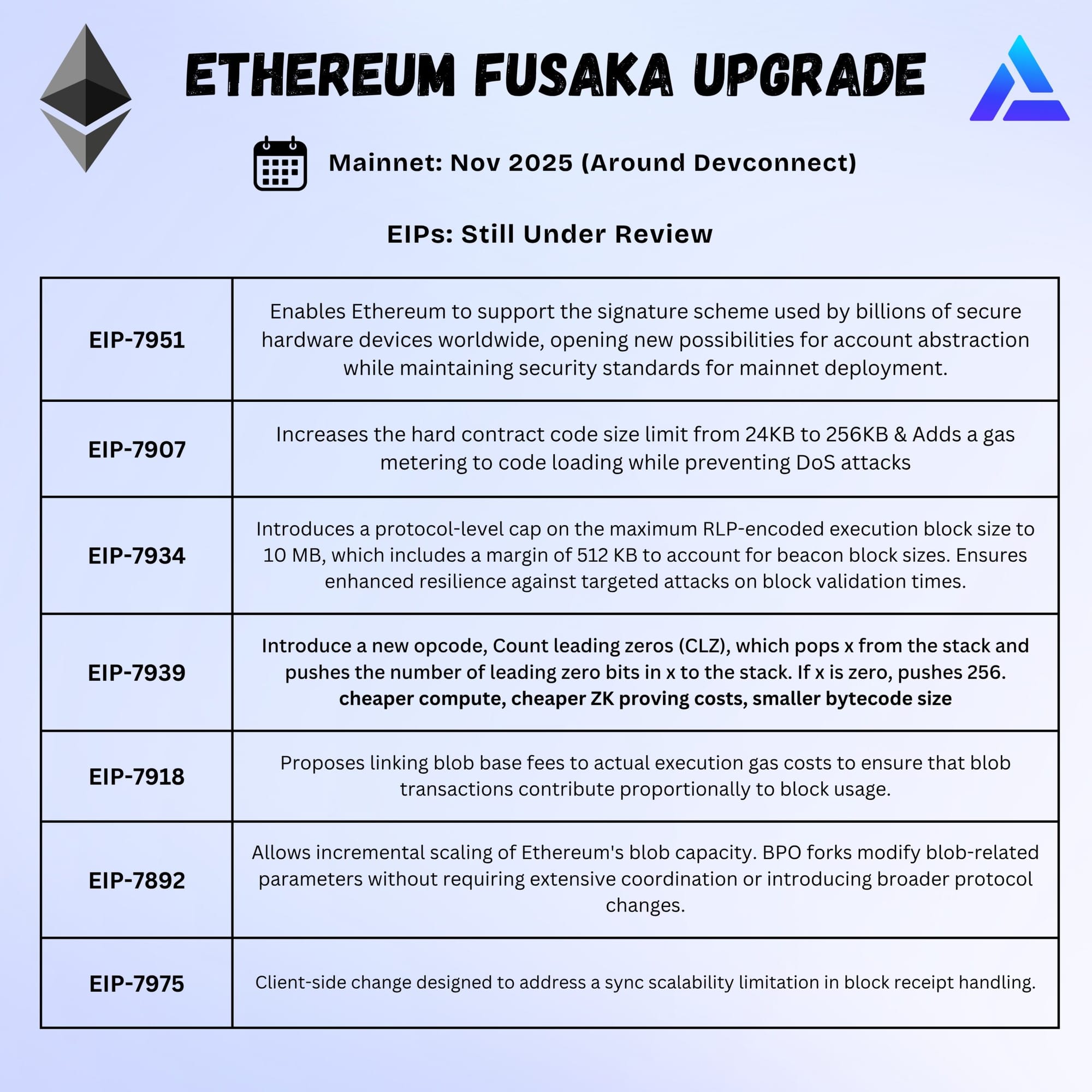Ready for a faster Ethereum? Unpacking the Fusaka upgrade
On December 3, 2025, the Ethereum network is poised for an upgrade designed to supercharge its scalability — a long-standing hurdle that once sparked the Layer-2 revolution. This is your deep dive on Fusaka.

Why Ethereum needs a power-up
Ethereum has long been dogged by scalability and throughput constraints, but core developers are constantly forging new enhancements to make the network nimbler and more user-friendly. The highly-anticipated Fusaka upgrade is built to deliver on that promise by cranking up the transactions per second and unlocking new efficiency.
Let's be real: despite its growing pains, Ethereum still commands the blockchain TVL (almost 57% share). However, BNB Chain and Solana are currently stealing the spotlight in 24-hour trading volume, as of October 13, 2025 ($22.5 billion and $10.2 billion, respectively, versus Ethereum’s $7.8 billion).

Millions flock to Ethereum-based DeFi protocols, NFTs, dApps, and Layer 2 chains every single day. But when demand skyrockets, the network clogs up; gas fees go through the roof, and slow transactions sour the experience for everyone.
What Fusaka packs under the hood
The Ethereum network is getting a massive gas limit increase and smarter data handling tricks to turbocharge its scale — all without crushing the node operators who power it.
Instead of rolling out flashy new features, Fusaka is all about beefing up performance and behind-the-scenes infrastructure. It’s the next leap forward after the Pectra upgrade, which wrapped in May 2025.
In short, get ready for:
- Cheaper rollup fees
- A massive capacity boost (more transactions per block)
- Souped-up developer tooling
- Lower validator hardware costs
Cranking up the block gas limit
Bumping the limit from 45 million to 150 million means Ethereum can devour more transactions and operations per block. This is non-negotiable for network growth — a surging wave of users wants to tap into DeFi, NFTs, and smart contracts.
Of course, nodes will need more storage and bandwidth to shoulder the extra data. That’s where the other secret weapons — PeerDAS and Verkle Trees — come into play, ensuring blazing throughput without compromising the network's rock-solid stability.
Peer data availability sampling (PeerDAS) lightens the load
This solution (EIP-7594) overhauls how validators confirm new data. Right now, verifying transactions forces them to download and store hefty data blobs.
Once Fusaka goes live, they'll instead randomly sample tiny bits of blobs from peers — like reading a few key excerpts instead of the entire tome.

Verkle trees rewire data storage
Blockchain data is getting a major reorganization — with data proofs squeezed into smaller pieces, drastically cutting storage needs. Proving parts of the blockchain state will be a breeze, which is vital for fueling Ethereum's scalability long-term.

Supercharging builder experience
Fusaka also includes bigger smart contract limits, new opcodes, and broader cryptographic support.
- Bigger smart contract code size (EIP-7907): A doubled limit (48KB) unleashes developers to build incredibly complex apps without splitting their logic across multiple contracts.
- Novel opcodes (EIP-7939): Adding the CLZ opcode supercharges bitwise operations, a boon for data compression and advanced cryptography.
- Wider cryptographic support (EIP-7951): Native support for the secp256r1 curve, a Web2 and mobile standard, paves the way for seamless wallet integrations (especially for enterprise and cross-platform).

Tackling Ethereum's toughest challenges head-on
Soaring user demand jacks up transaction costs; block space becomes fiercely competitive, and nodes struggle under heavier data loads. Fusaka takes aim at these pain points directly — its optimizations work in concert to propel Ethereum into a future of mass adoption.
- A major throughput boost: With a larger block size, every block will carry a heavier load of transactions and smart contract calls.
- Smarter data validation, a huge win for rollups that live and die by data blobs.
- Slashing hardware demands for validators and solo stakers, throwing the doors open for more participants.
- Empowering developers with greater contract flexibility.
- Upholding the security and decentralization of the network.
Countdown to mainnet: Fusaka's rollout plan
Fusaka will unfold in phases, from testnet activations to the mainnet deployment — giving developers a crucial window to stress-test performance and squash any bugs.
This cautious approach, paired with a focus on backward-compatibility, signals a shift toward steady, sustainable scaling.
On October 1, 2025, Ethereum successfully completed a test run on the Holesky testnet. The road ahead includes two more dress rehearsals:
- Sepolia testnet: Activation planned for October 14, 2025
- Hoodi testnet: Activation planned for October 28, 2025
- Preliminary mainnet target date: December 3, 2025 (depending on testnet results)
Launched in 2023, Holesky mimics the mainnet's validator setup but has been plagued by reliability issues. It will be shut down two weeks after Fusaka's mainnet launch.
What Fusaka's era means for you
Fusaka unlocks a host of wins for every part of the ecosystem — users, builders, and validators alike. This overhaul is set to make Ethereum speedier, leaner, and lighter on your wallet.
- For users: Get ready for buttery-smooth operations. More transaction confirmations at peak times mean the network won't choke on demand. While gas fees should become less volatile, they'll always dance to the tune of market activity.
- For developers: Gear up for robust and high-octane rollups. Larger blob capacity and PeerDAS will revolutionize how data is submitted to the mainnet, slashing both validator load and your rollup costs.
- For validators and node operators: Your bandwidth needs will shrink thanks to data sampling. Be ready to update your client software to stay in sync and dodge penalties.
Do you need to do anything?
If you use a wallet like Crypto.com On-Chain or a centralized exchange, Fusaka will happen automatically in the background. All changes will take effect seamlessly once the upgrade goes live.
However, validators and node operators must update their client software ahead of time to remain in sync and steer clear of penalties or slashing. The Ethereum developer community will, as always, provide crystal-clear instructions.
The bottom line on Fusaka
Fusaka is not a magic bullet that can finally solve all of Ethereum’s scaling woes for good — at least not on its own. What it does do, however, is lay down a seriously powerful new foundation. By tackling core infrastructure with PeerDAS and Verkle Trees, Fusaka is a calculated move that makes Ethereum fundamentally stronger and more efficient for the long haul.
For the average user, the change might feel subtle at first — a few cheaper transactions, a slightly smoother experience during a NFT mint. But behind the scenes, it is a major power-up. The end goal is a network that can handle the next billion users without breaking a sweat, and Fusaka is a critical pit stop on that journey.



